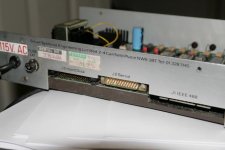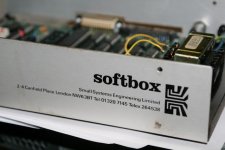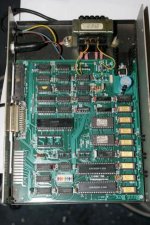Fairly early Softbox
Fairly early Softbox
Yes. It would boot from Pet floppies. The HD was optional. The boot disk had a custom config program who's name I forget, but it was much easier to use than movecpm, or whatever the normal CP/M ute was called. I probably have a boot disk somewhere in the loft. I disposed of my Pet hardware some time ago though.
Amongst the other products made around the Softbox hardware was a computer called a Miniwini. So named because it contained a winchester HD. There were fewer than a dozen made I think. I had one until relatively recently, but a bout of 'rationalisation' saw it off.
Small Systems Engineering was a small firm in a cobbled mews in North London with a dozen or so staff. The Soft/Hardboxes were part of a product portfolio specialising in interface products, mainly for the Pet. IEEE488-RS232 (both uni and bi-directional), IEEE488-Centronics. Later a CP/M card was produced for the early IBM PC, one for the Sirius and I seem to recall there was another for a machine called an Apricot (known internally as the Prune).
SSE went on to develop some PABXs. This coincided with the deregulation of telephony here in the UK in the mid 80s. An injection of venture capital saw the company grow under a new name and become successful in that field, including a stock market floatation. It was a special firm with a good many tales of high times and high-jinks. The former staff remain friends to this day.




